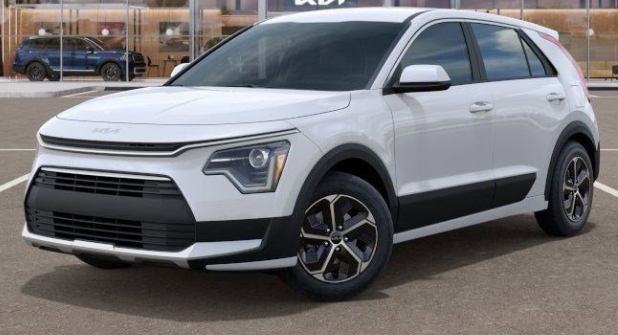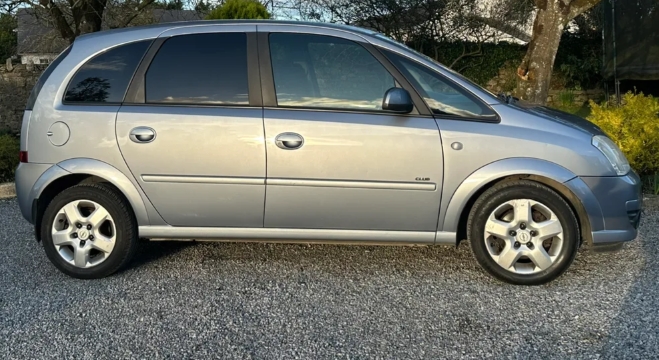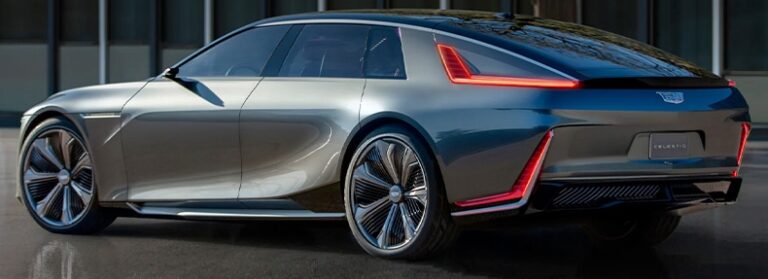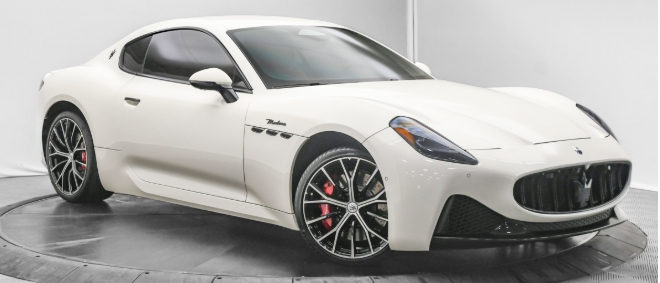The Quiet Revolution: Charting the Evolution of the Kia Niro
In the annals of automotive history, some cars announce their arrival with a thunderous roar, while others quietly revolutionize the landscape. The Kia Niro firmly belongs to the latter category. It wasn’t the first hybrid, nor the first electric vehicle, but its masterstroke was in its packaging and its philosophy. By wrapping cutting-edge, eco-friendly powertrains in the familiar and wildly popular crossover body style, Kia created a vehicle that normalized electrification for the masses. The Niro’s evolution is not just a story of a single model; it’s a mirror reflecting the rapid acceleration of the automotive industry’s shift toward a sustainable future.
First Generation (DE): The Pragmatic Pioneer (2017–2022)
The story of the Niro began not on a showroom floor, but as a strategic response to a changing market. By the mid-2010s, the Toyota Prius had long established hybrid dominance, but its distinctive Kammback design was polarizing. Simultaneously, the crossover SUV was on an unstoppable ascent. Kia’s brilliant insight was to merge the two: the efficiency of a dedicated hybrid with the practicality and style of a compact crossover. Built on a new, bespoke “eco-car” platform shared with the Hyundai Ioniq, the Niro was designed from the ground up for electrification.
2017-2018: The Hybrid Arrives
The first Kia Niro to hit North American and European shores for the 2017 model year was the Niro Hybrid (HEV). Its mission was clear: to be an “un-hybrid.” It deliberately avoided the quirky, futuristic styling of its competitors. With clean lines, Kia’s signature “Tiger Nose” grille, and a conventional crossover silhouette, it could easily be mistaken for a gasoline-only vehicle—and that was precisely the point. It was designed to appeal to buyers who wanted exceptional fuel economy without making a loud environmental statement.
Under the hood was a highly efficient 1.6-liter “Kappa” gasoline direct injection (GDI) four-cylinder engine paired with a 32-kilowatt electric motor and a 1.56 kWh lithium-ion polymer battery pack. This combination produced a modest but effective 139 horsepower and 195 lb-ft of torque. Crucially, Kia opted for a six-speed dual-clutch automatic transmission (DCT) instead of the continuously variable transmission (CVT) common in other hybrids. This gave the Niro a more engaging and familiar driving feel, further cementing its mainstream appeal.
The initial trim levels in the U.S. market were structured to offer a clear progression of features:
FE: The hyper-miling base model, stripped of non-essentials like roof rails to maximize aerodynamics and achieve an EPA-rated 50 MPG combined.
LX: The volume seller, adding features like roof rails, push-button start, and more refined interior trim.
EX: A step up, introducing amenities like heated front seats, blind-spot detection, and LED daytime running lights.
Touring: The range-topping model, equipped with a sunroof, a premium Harman Kardon sound system, leather upholstery, and larger 18-inch wheels (which slightly reduced fuel economy).
2018: The Bridge to Electric – The Niro PHEV
Just a year after the hybrid’s debut, Kia introduced the Niro Plug-in Hybrid (PHEV) for the 2018 model year. This model represented the perfect “bridge” technology for consumers intrigued by electric driving but hampered by range anxiety. It used the same 1.6-liter engine but incorporated a more powerful electric motor and a significantly larger 8.9 kWh battery pack.
This upgrade allowed the Niro PHEV to travel up to 26 miles on purely electric power, covering the average daily commute for many drivers without burning a drop of gasoline. When the battery was depleted, it seamlessly reverted to operating like a standard hybrid. The PHEV was typically offered in mid-to-high level trims, such as the LX, EX, and EX Premium, bundling its advanced powertrain with a generous list of features.
2019-2022: The Game-Changer – The Niro EV (e-Niro)
The final and most significant piece of the first-generation puzzle arrived for the 2019 model year: the all-electric Niro EV (marketed as the e-Niro in Europe and other regions). This wasn’t just another Niro; it was a watershed moment for affordable electric vehicles. While the Chevrolet Bolt and Nissan Leaf had paved the way, the Niro EV combined a long-range battery with the desirable crossover body style, creating arguably the most practical and compelling mass-market EV of its time.
Its powertrain was completely different. The gasoline engine was gone, replaced by a powerful 150-kilowatt (201 horsepower) electric motor driving the front wheels. It was powered by a substantial 64 kWh liquid-cooled battery pack, which delivered an impressive EPA-estimated range of 239 miles on a single charge.
Visually, the Niro EV distinguished itself with a unique, closed-off front grille that housed the charging port, aerodynamic wheels, and subtle blue accents. It was offered in two primary trims in the U.S.:
EX: Well-equipped from the start, featuring a suite of driver-assistance technologies and heated front seats.
EX Premium: Added luxury features like a sunroof, a larger infotainment screen, the premium Harman Kardon audio system, and ventilated front seats.
2020 Mid-Cycle Refresh
For the 2020 model year, the entire Niro family received a significant refresh. The exterior was sharpened with new front and rear bumpers, revised “ice-cube” LED fog lamps, and updated headlight and taillight designs. The interior saw the most substantial upgrades, with an available 10.25-inch widescreen infotainment system and a new 7-inch digital instrument cluster, bringing the Niro’s tech offerings in line with Kia’s newer models.
Second Generation (SG2): A Bold Declaration (2023–Present)
After a successful six-year run, the Niro was completely redesigned for the 2023 model year. If the first generation was about subtly blending in, the second generation was about standing out. Its radical new design was heavily inspired by the dramatic 2019 HabaNiro concept car and Kia’s new “Opposites United” design philosophy.
The most striking feature is the “Aero Blade” C-pillar, a contrasting color panel that is not just a stylistic flourish but also a functional aerodynamic element, channeling air to improve efficiency. The front end is dominated by a reinterpreted “Tiger Nose” and angular “heartbeat” daytime running lights, giving the new Niro a futuristic and confident presence.
The interior transformation was equally profound. A sculptural dashboard houses dual 10.25-inch panoramic screens for the instrument cluster and infotainment, creating a high-tech cockpit. In a nod to its eco-friendly mission, the cabin is replete with sustainable materials, including a headliner made from recycled wallpaper, seats upholstered in bio-polyurethane with Tencel from eucalyptus leaves, and BTX-free paint on the door panels.
Kia wisely continued its successful three-powertrain strategy, refining each option for the new generation.
Niro Hybrid (HEV): Optimized Efficiency
The second-generation Niro HEV retains the proven 1.6-liter engine and six-speed DCT, still producing a combined 139 horsepower. However, through engineering refinements and improved aerodynamics, its efficiency was boosted to an outstanding EPA-estimated 53 MPG combined. A new “Greenzone” drive mode was introduced, which automatically switches the car into EV mode in designated areas like school zones and hospitals, using navigation data.
U.S. trim levels were reconfigured:
LX: The entry point, offering an impressive array of standard features including the dual-screen interface and a full suite of safety tech.
EX: Adds popular upgrades like heated front seats, a wireless phone charger, and larger 10.25-inch infotainment screen.
SX Touring: The top-tier model, featuring vegan leather-trimmed seats, the premium Harman Kardon stereo, a sunroof, and unique 18-inch wheels.
Niro Plug-in Hybrid (PHEV): More Power, More Range
The Niro PHEV received the most significant powertrain upgrade of the trio. Its battery pack grew to 11.1 kWh, and a more powerful electric motor was fitted. This boosted its all-electric range by 25% to an impressive 33 miles. The combined output also increased to 180 horsepower, giving the PHEV noticeably quicker acceleration. It is primarily offered in the well-appointed EX and SX Touring trims.
Niro EV: Refined and Feature-Packed
The second-generation Niro EV is an evolution of its successful predecessor. It uses a slightly larger 64.8 kWh battery, pushing its EPA-estimated range to a very competitive 253 miles. The 201-horsepower motor remains, providing brisk performance.
The most significant additions are in its technology. The new platform allows for faster DC charging speeds and, crucially, introduces Vehicle-to-Load (V2L) capability. This class-leading feature allows the Niro EV to function as a mobile power source, capable of powering appliances, electronics, or even charging another EV in an emergency.
The Niro EV is offered in two trims:
Wind: The new base model, loaded with features including the dual 10.25-inch screens and heated front seats.
Wave: The premium trim, adding the V2L functionality, a sunroof, premium audio, and advanced driver-assistance features like Highway Driving Assist 2.
.
RepairSurge Online Repair Manuals Replace Bulky Books With Reliable Digital Information!
Faster And Cheaper Than Traditional Printed Manuals, Users Get Instant Access To The Repair Information They Need For Any Car, Truck, Van or SUV:
.
Conclusion: A Legacy of Smart Choices
The Kia Niro’s journey from a conservative but clever hybrid to a bold, design-forward family of electrified vehicles is a masterclass in product planning. It succeeded by demystifying green technology. It offered a simple proposition: choose your favorite crossover, then choose your level of electrification—hybrid, plug-in hybrid, or full electric. This “power of choice” strategy, combined with Kia’s value, practicality, and industry-leading warranty, has made the Niro a quiet giant in the EV transition.
As Kia forges ahead with its dedicated, ground-up electric vehicles like the EV6 and EV9, the Niro maintains its vital role. It is the accessible, practical, and stylish entry point into electrification, a vehicle that doesn’t ask its owners to make compromises, only to make a smart choice. Its evolution is a testament to the idea that the most profound revolutions are often the ones that happen quietly, one sensible step at a time.







